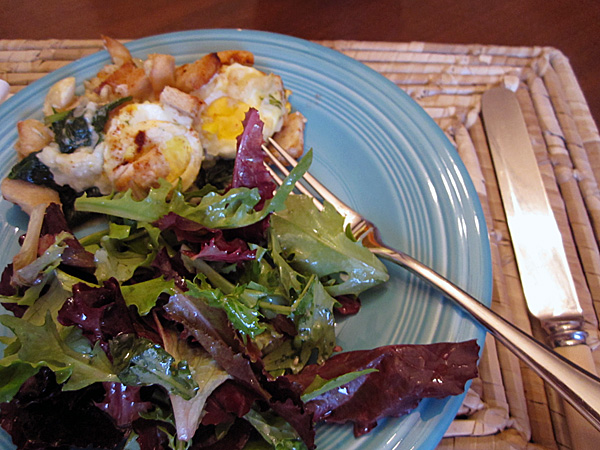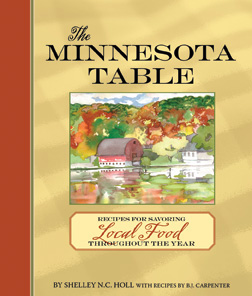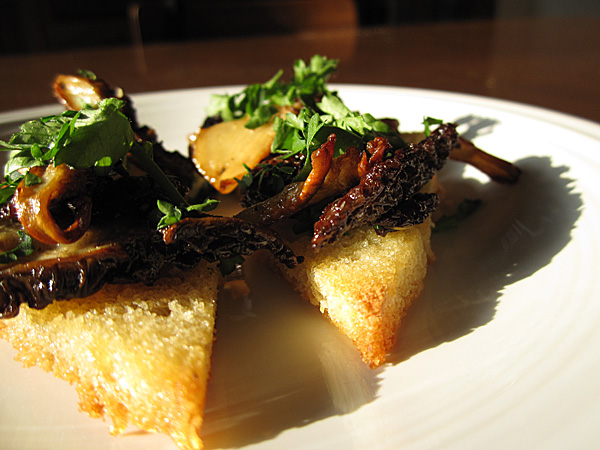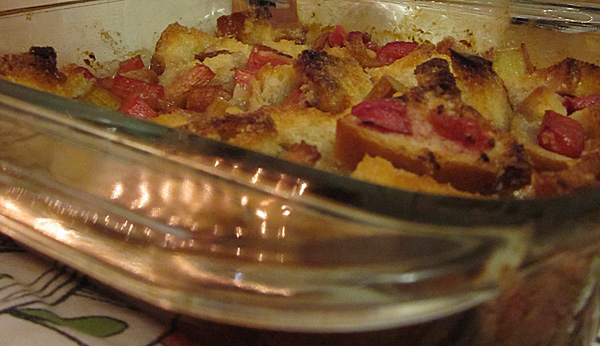
Authors Shelley Holl and B.J. Carpenter spent a year traveling between their kitchens and Minnesota’s farms, ranches, artisanal dairies, and wild lands. The result is The Minnesota Table, a seasonal cook’s companion that champions eating local by combining travel stories and producer interviews with recipes and tips — such as how to store foods for the long winter, as the authors say, “when there is nothing local, fresh or green.”
This is one of those cookbooks, if it is accurate to call it such, that is as enjoyable and interesting to read as it is to cook. Outside of the recipes, the bulk of the book was written by Holl — a painter and a former travel writer for the New Orleans Times-Picayune — who captures the authors’ rambling adventures in essays, photographs, and watercolor sketches. She writes like a journalist, balancing the humor, irony, or poignancy of her personal experience with a well-researched, detailed account of the thing at hand, be it the birth of a lamb or a hand-stamped communion wafer.
 For example, in a particularly edifying and hilarious section on asparagus — contained in the April chapter — Holl writes of the vegetable’s history both as an aphrodisiac and as the mighty spear brandished by former President George Bush in the US Government’s War on Drugs. Apparently, the latter encouraged Peruvian farmers to grow asparagus instead of coca. In the end, Holl notes, his efforts pretty much leveled the American market for commercial asparagus and did little to curb the flow of cocaine into the states. Later, she takes us along as she and Carpenter tour an asparagus farm, providing character sketches of not only the farmer:
For example, in a particularly edifying and hilarious section on asparagus — contained in the April chapter — Holl writes of the vegetable’s history both as an aphrodisiac and as the mighty spear brandished by former President George Bush in the US Government’s War on Drugs. Apparently, the latter encouraged Peruvian farmers to grow asparagus instead of coca. In the end, Holl notes, his efforts pretty much leveled the American market for commercial asparagus and did little to curb the flow of cocaine into the states. Later, she takes us along as she and Carpenter tour an asparagus farm, providing character sketches of not only the farmer:
“The Willenbrings were religious people, with strong opinions about everything from water quality to the dormitory-style housing of their supersized family … We sensed that organic farming and the hard work it entails seemed to go hand-in-hand with their religious ethic, making asparagus, a crop that requires relentless tending, an especially good fit.”
But also the vegetable:
“When ready, the crop is handpicked; it would be hard to do it any other way … The spears spring from rootstock, called crowns, and at first are picked once every couple of days. As the season goes on, asparagus can grow as much as seven inches a day, making picking a daily, sometimes even twice daily, event. Unless there is a multigenerational labor source like the Willenbrings’, the cost of handpicking becomes critical to the success of an asparagus grower’s business.”
For the growing population of folks concerned with supporting local food economies by eating vegetables, meat, and dairy produced close to home, Holl’s essays will likely feel highly relevant, providing new insight, resources, and perhaps some fun road trips. At the same time, The Minnesota Table (176 pages, hardcover, Voyageur Press) provides what seem like useful tips (too early in the year to tell, yet!) for getting the most out of your local foods throughout the year: How-tos that outline everything from drying herbs to freezing berries and creating a root cellar — and of course recipes. Holl also contributed watercolors scattered throughout the book — a flock of hens here, a rickety barn there — that are delightful, but would have profited from a bit more white space to set them off.
For her part, Carpenter, a culinary instructor and former restaurateur, provides seasonal recipes that are relatively simple in their elements (letting all those locally produced meats and veggies sing) yet sophisticated and delicious. In keeping with the spirit of the book, we cooked our way through the May recipes.

Of Sautéed Morels on Buttered Toast Points: what’s not to like? With parsley, salt, pepper, and butter as the only embellishments, the morels were free to be their nutty, slightly smokey selves. Oh, and the toast, buttered on both sides, was good too.
It might sound silly, but we were kind of overjoyed with Carpenter’s simple Spring Green Salad and Tarragon Vinaigrette. Salad dressing can be tricky, especially since we served this one over a bed of baby arugula, fresh out of the garden. (It’s pictured, top, with a spring mix of greens.) A nice balance of tarragon and dijon, the dressing was tasty — wonderfully salty, I might add — but it didn’t overwhelm our fledgling arugula’s spicy leaves. On the richer side, Eggs Lorene baked soubise sauce over a bed of spinach, hardboiled eggs, and homemade croutons to great effect. Under the lovely, dilled cream sauce, the eggs remained custardy and the spinach tender, so that while filling, the dish was also rather delicate. Although intended as a brunch, it made a very nice dinner with the Spring Green Salad.

The biggest surprise was Ready Set Rhubarb. I must confess to feeling real concern as I slid the concoction — just sourdough bread, rhubarb, butter, and sugar — into the oven. Would it be a mess of singed toast and jammy rhubarb? No, in fact, it would be a warm, bread pudding equal parts sweet, rich, and pleasantly bitter. A real keeper, as you’ll see if you make the recipe below.
Ready Set Rhubarb
Reprinted from The Minnesota Table with permission from the publisher
Serves 4 to 6
Ingredients
3 c day-old sourdough or similar style white bread, cut into 1-inch cubes
½ c unsalted butter, melted
3 c rhubarb, sliced into 1-inch pieces
¾ to 1 c of granulated sugar
1. Preheat oven to 350°F.
2. Mix all the ingredients together in a large bowl.
3. Lightly grease a 9-inch square or 8-x10-inch baking pan, and add the batter.
4. Bake in the center of the preheated oven for 1 hour or until an inserted toothpick comes out clean.
5. Serve warm or at room temperature with crème fraiche or heavy cream and coffee.

We agree. Lovely book.
Hmmm. The morels on toast points looks to be scrumptious. As we’re going to our local grower’s market tomorrow, I’ll purchase some morels and try to replicate this.
It is nice to see you back writing for Heavy Table.
Mom
I just made that Ready Set Rhubarb, and, wow, that was really good (and easy). Yummy.
Is the rhubarb recipe correct? No eggs or milk? I’m trying to figure out what holds it together. The butter wouldn’t seem to be enough to do that.
Karen,
Yes, this is the entire recipe. Surprisingly simple isn’t it? The rhubarb breaks down as it bakes and, along with the butter and sugar, holds the whole thing together splendidly. My photo does little for it, but I made the dish again last night and it was delicious!
Thanks, Susan